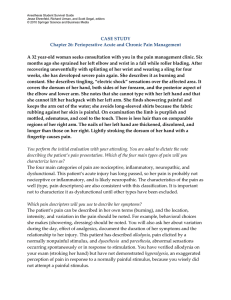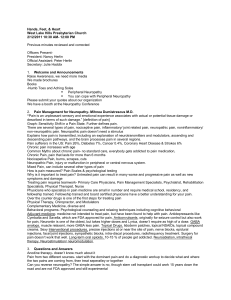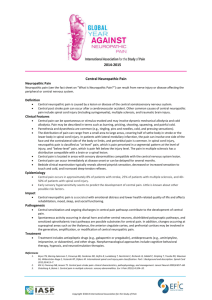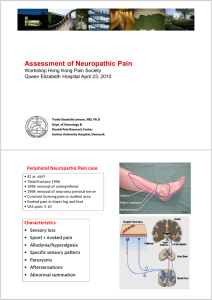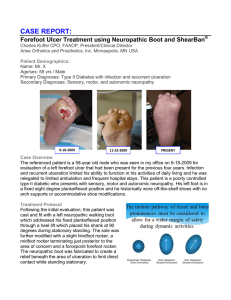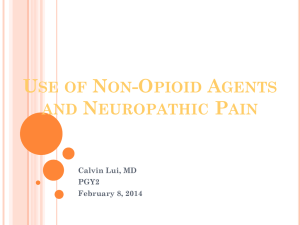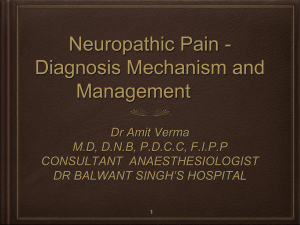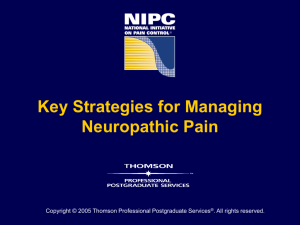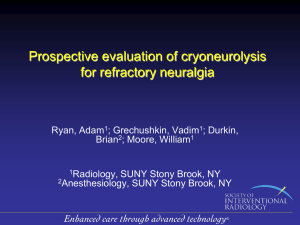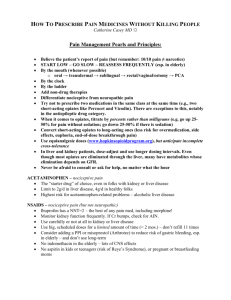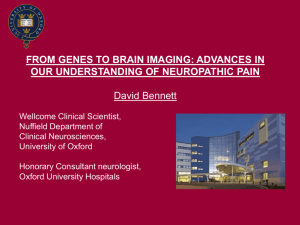Presentazione di PowerPoint
advertisement
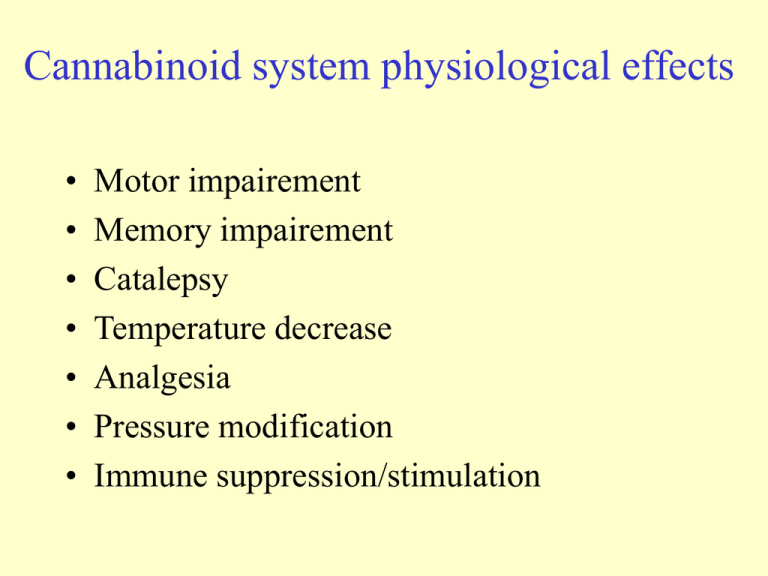
Cannabinoid system physiological effects • • • • • • • Motor impairement Memory impairement Catalepsy Temperature decrease Analgesia Pressure modification Immune suppression/stimulation Definition of pain and nociception • Pain is “An unpleasent sensory and emotional experience associated with actual or potential tissue damage, or described in term of such damage” IASP 1979 • Nociception is referred to the reception in the central nervous system of signals triggered by the activation of specialized receptors called nociceptors Pain pathway I Fiber group Quality Mechanical Aδ Sharp, pricking pain Thermal and mechano-thermal Aδ Sharp, pricking pain Thermal and mechano-thermal C Slow, burning pain Polymodal C Slow, burning pain Meissner’s corpuscle Aβ Flutter Pacinian corpuscles Aβ Vibration Ruffini corpuscle Aβ Steady skin indentation Merkel receptor Aβ Steady skin indentation Receptor type Nociceptors Cutaneous and subcutaneous mechanoreceptors Skin Spinal cord DRG Pain pathway II Type of pain Pain grouping Etiology Neuropathic Painful diabetic neuropathy (PDN) HIV-related neuropathic pain Postherpetic neuralgia (PHN) Acute Postoperative pain Visceral Irritable bowel syndrome Chronic pelvic pain Cancer related pain Severe pain Metastatic bone pain Neuropathic pain (caused by nerve injury and chemotherapic agents) Breakthrough pain Musculoskeletal pain Painful osteoarthritis Painful rheumatoid arthritis Chronic lowback pain Fibromyalgia Headache Migraine Chronic daily headache Preclinical pain models Ethical issues Legislation: Procedures involving animals and their care must be conducted in conformity with the institutional guidelines, in compliance with national and international law • Experiments involving the study of pain on conscious animals must be reviewed by a specific committee; • Is forbidden the use of animals paralyzed with a neuromuscular blocking agent without a general anesthetic or an appropriate surgical procedure that eliminates sensory awareness; • The duration of experiments must be as short as possible, and the number of animals involved must be kept to the minimum. Preclinical pain models Phasic pain models A. Acute pain: Tonic pain models Inflammatory pain models B. Chronic pain: Neuropathic pain models Acute pain models Phasic: short-duration stimulus-evoked models The hot plate test (according to Woolfe and McDonald, 1944) The tail flick test (according to D'Amour & Smith, 1941) Disease models Tonic: short-duration spontaneous models Pain-like behaviour Formalin test Paw licking and flinching (sec/5 min) First phase 250 Second phase 200 150 100 50 0 0 10 20 30 40 50 min after i.pl. injection saline 1.5% formalin 60 70 Chronic pain models 1. Metabolic disfunction STZ-induced diabetic neuropathy 2. Cancer pain Vincristine-induced neuropathic pain 3. Infectious disease Varicella zoster virus-induced neuropathy 4. Neuropathic pain Surgical manipulation of sciatic nerve 5. Post-tissue injury Injection of an irritant into a joint or hind paw 6. Inflammatory pain model Injection of CFA Neuropathic pain models Preclinical pain models Thermal allodynia (hot) plantar test • Read outs: – – – – Mechanical allodynia Mechanical hyperalgesia Cold allodynia Hot allodynia Mechanical allodynia von Frey hair test Thermal allodynia cold plate test Mechanical hyperalgesia Randall-Selitto Cannabinoid and nociception Potential targets for intervention • CB1 and CB2 receptors: – Use of agonists to induce analgesia. • Endocannabinoids internalization: – Blockade of the transporter to elevate the extracellular level of endocannabinoids. • Endocannabinoids degradation – Blockade of the endocannabinoid degrading enzymes (FAAH and/or MAGL) to elevate endocannabinoid extracellular level. CB1 and nociception CB1 localization Spinal cord dorsal horn (Hegyi et al 2009)
